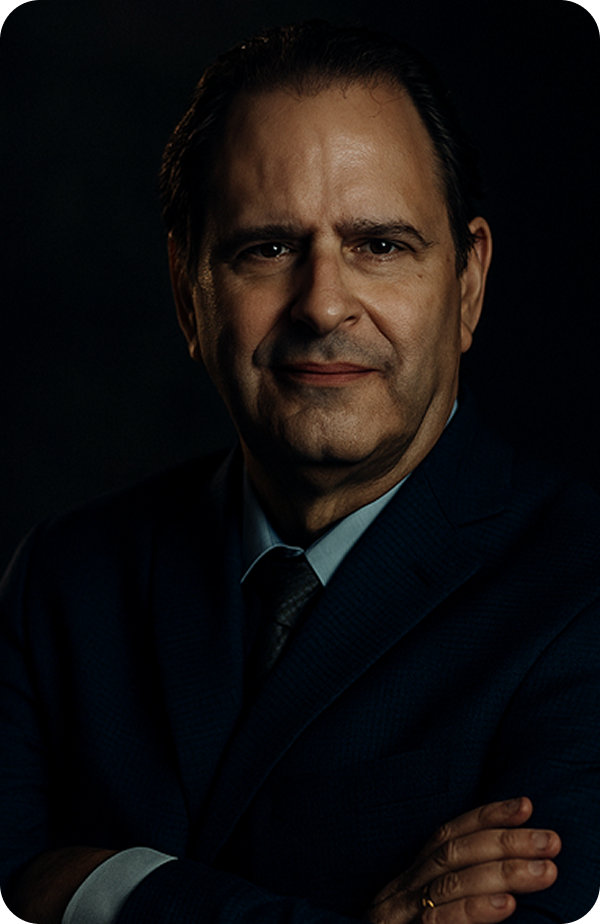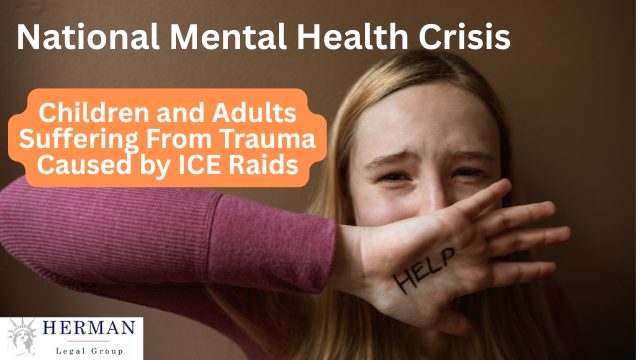By Richard T. Herman, Immigration Attorney (30+ years)
At a Glance
- What changed: A new $100,000 H-1B visa fee (referred to as the 100,000 fee for H) applies to certain new H-1B petitions, particularly for foreign workers outside the U.S., per the Sept. 19, 2025 Presidential Proclamation and USCIS implementation guidance (updated guidance clarifying the new policy). This includes petitions from cap-exempt institutions like hospitals, with special relevance to the healthcare sector, starting after Sept. 21, 2025.
- Who pays: Employers – not workers – must pay H-1B costs, confirmed by USCIS and DOL wage rules. All hospitals must pay standard fees for H-1B petitions, and the new fee for H-1B is a significant additional cost for hospitals.
- Who’s affected: The fee applies to new H-1B applicants abroad, not to changes of status, amendments, or extensions for individuals already in the U.S.
- Why it matters: Medical groups like the AMA and AHA warn it could deepen physician shortages and limit patient access to care. Hospitals serve their communities by addressing staffing shortages and ensuring access to care, especially in underserved areas; the new fee could impact their ability to recruit foreign-trained clinicians and maintain essential healthcare services. Facilities must now include the new fee in financial planning, making recruitment more difficult.

Introduction
Hospitals nationwide depend on international medical graduates (IMGs) and H-1B-sponsored professionals, with H-1B visas serving as a key immigration pathway for healthcare, to fill critical gaps in patient care. Hospitals and health systems employ thousands of H-1B visa holders, crucial for staffing amidst workforce shortages prevalent in rural communities. The new Presidential Proclamation issued Sept. 19, 2025 imposed a $100,000 fee on certain new H-1B petitions filed after Sept. 21, 2025, as detailed in subsequent USCIS guidance.
This fee threatens the ability of hospitals in rural and underserved areas to recruit foreign healthcare professionals. Hospitals increasingly rely on foreign workers from other countries to address persistent shortages in the healthcare workforce. A wide range of health occupations, including physicians, nurses, and other healthcare workers, are impacted by these shortages. A separate study anticipates a 6% shortage of registered nurses nationwide by 2037, with a 13% shortage in non-metro areas, further compounding the challenges.
The policy—branded as part of an “America First” agenda—has ignited concern from leading medical associations and employers that it will increase hospital costs, hinder recruitment, and delay care in already understaffed regions. Rural or non-metro areas are experiencing greater shortages of healthcare workers than other parts of the country. Hospitals and medical professionals face challenges in recruiting and retaining qualified staff, especially in rural and underserved areas.
The U.S. is expected to face a shortage of 187,130 full-time equivalent physicians by 2037, according to the Health Resources and Services Administration’s 2024 report, with rural areas experiencing greater shortages, exacerbating these challenges. Additionally, the U.S. needs an additional 13,075 physicians just to fill current shortages, as highlighted in the same HRSA report. Foreign trained clinicians and foreign trained doctors from various countries are essential to the U.S. healthcare system, especially in underserved and rural communities. These professionals are highly qualified, must demonstrate English fluency, and meet the nation’s standards for licensure and practice, including meeting state licensure requirements.
Fast Fact:
According to USCIS, any petition subject to the new fee must include proof of payment, or it will be denied outright.
Understanding the New H-1B Fee
What Changed
The USCIS alert and Presidential Proclamation state that the $100,000 payment applies to covered new petitions beginning Sept. 21, 2025.
The new fee does not apply to previously issued H-1B visas or petitions; only new filings after the effective date are subject to the charge.
Who Pays
Under DOL regulations, the employer must pay all H-1B fees; passing them to the worker can violate wage and benching laws.
Who’s Covered
The $100K fee applies to new applicants abroad, not to extensions, amendments, or changes of status for those already inside the U.S. as clarified by USCIS. For-profit hospitals do not qualify for a cap exemption and are subject to the new higher fees for new hires from abroad. Exceptions to the fee may be considered by USCIS on a case by case basis.
Are Hospitals Exempt?
Not yet. The American Medical Association and American Hospital Association have petitioned for health-care exemptions, citing patient safety and workforce shortages, but DHS has not formalized any carve-outs. The Department of Homeland Security can grant national interest exceptions to the $100,000 fee in extraordinary circumstances, requiring employers to prove its necessity.
There may be discretionary exceptions to the $100,000 fee, but obtaining them may be slow and difficult. Exceptions to the new fee for national interest will be granted only in extraordinarily rare circumstances, according to U.S. Citizenship and Immigration Services (USCIS), which is responsible for reviewing exemption requests. U.S. citizenship status is not affected by the new fee, which applies only to non-citizen applicants.
Why Hospitals Should Care: Costs, Staffing, and Compliance
IMGs in Hospital Staffing
International medical graduates account for roughly one-fourth of all practicing physicians in the United States—particularly in primary care and rural hospitals. One in four doctors providing care in the US are foreign-trained. Medical residents, including many international graduates, play a vital role in hospital staffing, especially in underserved areas. More than 64% of these graduates practice in medically underserved areas or health professional shortage areas.
These foreign-trained medical professionals do not displace American workers but instead fill critical gaps in care, especially in underserved areas. Compared to American graduates, international medical graduates are more likely to work in rural and underserved regions, where staffing shortages are most acute. The healthcare industry relies heavily on H-1B visa holders, including physicians, nurses, and specialists. The fee hike could deter hospital sponsorships and worsen recruitment cycles, making retaining staff even more challenging and threatening continuity of care.
Key Insight:
The U.S. faces a projected shortfall of 13,500 – 86,000 physicians by 2036; even small barriers to IMG hiring may have large downstream effects.
Cost Impact
Before 2025, total H-1B government fees averaged $5,000 – $10,000 per petition. For fiscal year 2025, the base filing fee for the H-1B petition is $780 for employers with 26 or more full-time equivalents, and $460 for smaller employers and non-profits. The new $100,000 layer dwarfs these costs, pressuring CFOs to reprioritize departments and scale back international recruitment—especially in psychiatry, anesthesiology, and rural family medicine.
Hospitals must ensure funding for positions that play critical roles in patient care, as these are essential for maintaining access to quality healthcare. The optional premium processing fee for expedited processing is $2,805, adding further financial strain to employers.
At a Glance:
Hospitals may need to protect fee budgets for specialties that serve critical roles in the organization, such as life-critical or underserved specialties.
Compliance & Risk
USCIS guidance explicitly warns that petitions lacking proof of payment (or an approved exception) will be denied. HR and legal teams must now integrate fee-verification into their filing checklists and ensure costs are not passed to workers, per DOL policy.
Trump’s Immigration Context for Health Care
The $100K fee stems from the same “Restriction on Entry of Certain Nonimmigrant Workers” framework announced by president Trump and the Trump administration, mirroring earlier efforts to curb reliance on foreign labor. Many hospitals are exempt from the standard annual H-1B cap, but the new $100,000 fee still applies unless an exemption is granted.
While positioned as protecting U.S. jobs, hospital groups argue the policy conflicts with patient-care realities, especially in underserved communities. Letters sent by medical societies emphasize that H-1B physicians do not displace American workers; rather, they fill critical gaps in care.
Reuters reports that medical associations are warning of immediate disruptions to hospital staffing. Meanwhile, lawsuits—such as one detailed by AP News—argue the fee is unlawful and lacks congressional authorization. The American Medical Association and over 50 other health care-related societies have requested an exemption from the new H-1B fees for international medical graduates.
Fast Fact:
The lawsuit coalition includes universities, hospitals, and tech companies citing “catastrophic hiring consequences.”
National Impact: Hospitals Adjusting Strategies
Major systems in states like Texas, New York, and California are reassessing reliance on H-1B pipelines. Some institutions are front-loading in-country changes of status to avoid the fee; others are shifting toward J-1 waiver or O-1 tracks.
In Ohio, large networks such as Cleveland Clinic, University Hospitals, OhioHealth, and OSU Wexner Medical Center are reviewing international physician recruitment strategies to mitigate exposure while maintaining patient coverage. These policy changes also significantly impact other health care workers, including therapists, pharmacists, and clinical lab experts, who are essential to hospital operations and patient care. Other healthcare professionals are similarly affected by adjustments to visa policy and fee structures, which can influence recruitment and retention across the healthcare workforce.
Need to Know:
Hospitals with robust in-U.S. residency programs can pivot to change-of-status filings, which remain exempt from the $100K payment.
Ohio Focus: Cleveland & Columbus
Cleveland
Cleveland’s hospital corridor—anchored by Cleveland Clinic and University Hospitals—hosts thousands of IMGs across sub-specialties. Many enter the workforce after completing residencies in the U.S., making them eligible for status changes rather than new petitions abroad.
Important Note:
Because the new fee only applies to petitions filed abroad, Ohio systems can prioritize domestic transitions to avoid the $100K cost.
Columbus
Columbus-based OhioHealth and OSU Wexner Medical Center face growing demand in primary care, behavioral health, and rural outreach. These institutions are leveraging J-1 waivers through the Conrad 30 Program to offset potential H-1B pipeline disruption.
Strategic Responses for Hospitals
1. Cost & Workforce Planning
- Build scenario budgets for fee-applicable vs. exempt cases.
- Reserve fee exposure for mission-critical specialties.
- Develop contingency staffing using telehealth and locum tenens where feasible.
2. Alternative Visa Options
- J-1 Waivers: Conrad 30 and federal programs for IMGs serving underserved regions.
- O-1 Visas: For physicians with exceptional achievements.
- TN Visas: Available to qualified Canadian and Mexican clinicians.
- H-1B Transfers: For candidates already in the U.S., exempt from the $100K fee.
Expert Tip:
Screen early—if a physician is already in U.S. status, file a change of status rather than a new petition abroad.
3. Compliance Safeguards
- Include proof of payment (e.g., Pay.gov receipt) with any covered filing.
- Keep audit-ready records to show the employer—not the worker—paid all costs.
- Monitor updates from USCIS Newsroom, AHA, and AMA.
4. Rural and Underserved Strategy
Invest in Conrad 30, VA, or Appalachian Regional Commission waiver pathways to fill primary-care roles, especially in rural and underserved communities where H-1B costs are prohibitive.
Comparison Table: Law Firms for Health-Care Employers
| Firm | Geographic Reach | Health-Care Focus | Why Choose Them |
|---|---|---|---|
| Herman Legal Group | National / Ohio (Cleveland & Columbus) | H-1B, J-1, O-1, TN for hospitals & IMGs | 30+ yrs experience, multilingual, responsive advisory for hospital executives |
| Fragomen Worldwide | Global | Employer-sponsored visas, compliance | Deep employer infrastructure, global reach |
| Berry Appleman & Leiden (BAL) | U.S. & Intl. | High-volume corporate immigration | Tech-driven HR support tools |
| Jones Day | HQ Cleveland / Global | Health-care + employment law | Integrated regulatory + immigration services |
| Squire Patton Boggs | Global / Ohio offices | Immigration + policy monitoring | Cross-border counsel with Ohio focus |
Essential Info:
Ask prospective counsel about (1) fee-applicability triage, (2) proof-of-payment protocols, (3) litigation tracking, and (4) hospital-specific waiver strategies.
Outlook: Policy Watch & Litigation
The policy remains in flux. Many healthcare organizations remain concerned about the impact of the fee and ongoing litigation. AMA and AHA continue lobbying for health-care exemptions, while federal lawsuits challenge the legality of the fee. USCIS may issue clarifying FAQs or interim final rules refining applicability.
Key Insight:
Even if courts pause the fee, uncertainty will persist; hospitals should keep dual recruiting pipelines (H-1B + J-1/O-1) ready.
Cleveland & Columbus: Local Action Steps
- Audit all pending H-1B files for proof-of-payment compliance.
- Prioritize status-change candidates already in the U.S.
- Expand J-1 waiver networks through Ohio’s Department of Health.
- Coordinate with regional counsel to track court outcomes and USCIS updates.
Conclusion
The $100,000 H-1B fee marks one of the most consequential immigration cost shifts in modern U.S. health-care history. Hospitals must now balance patient-care mandates against new regulatory expenses. By leveraging in-country petitions, J-1 waivers, and expert legal counsel, institutions can continue serving communities without sacrificing compliance.
For a detailed compliance audit or executive briefing, contact Herman Legal Group—the Law Firm for Immigrants—with offices in Cleveland and Columbus, serving hospitals nationwide.
Key Takeaways
- The $100K fee applies to new abroad-filed H-1B petitions, not to U.S.-based status changes.
- Employers must pay and show proof of payment or risk denial.
- No doctor exemption yet, though AMA/AHA are pushing for one.
- Hospitals should pivot to J-1 waivers, O-1, or in-status H-1B transfers.
- Cleveland and Columbus systems can minimize impact via domestic filings and Conrad 30 strategies.
Resource List
Government & Policy Sources
- USCIS H-1B Fee FAQ (2025)
- USCIS Presidential Proclamation Implementation Notice
- White House Proclamation (Sept 19 2025)
- U.S. Department of Labor H-1B Employer Rules
Professional & Advocacy Organizations
- American Medical Association (AMA) Press Release on Fee Exemption
- American Hospital Association (AHA) Perspective
News & Analysis
- Reuters Coverage: Trump’s H-1B Fee and Doctor Shortages
- Stateline Feature: How the $100K Fee Could Worsen Shortages
- AP News – Hospitals Join Lawsuit Challenging H-1B Fee
Legal Guidance & Consultation
- Herman Legal Group – Book Consultation
- Fragomen Worldwide
- Berry Appleman & Leiden (BAL)
- Jones Day (Cleveland HQ)
- Squire Patton Boggs (Cleveland & Columbus)








Immigration Lawyer for Media Comment on Trump’s Immigration Policies — Richard T. Herman, Esq.